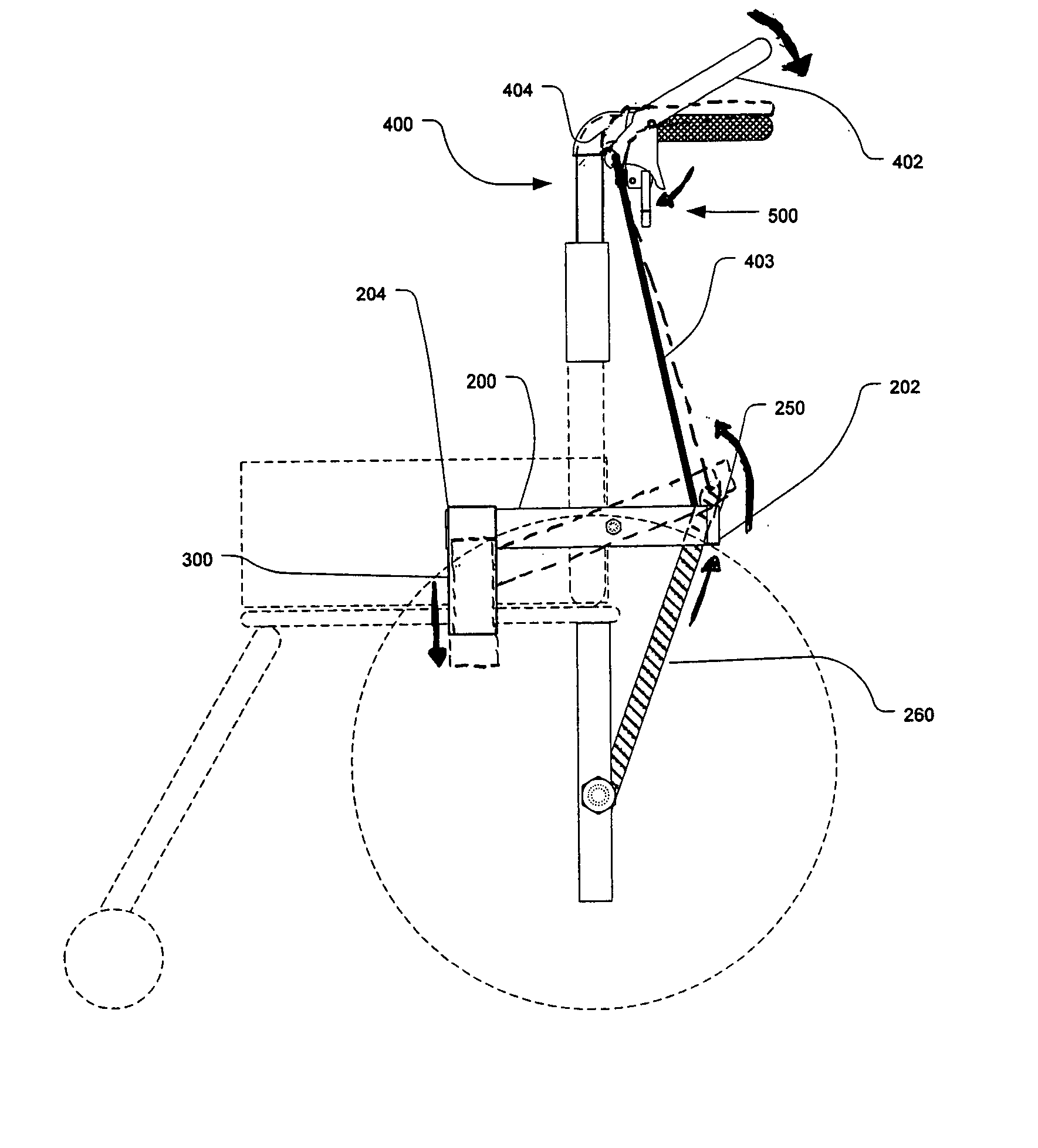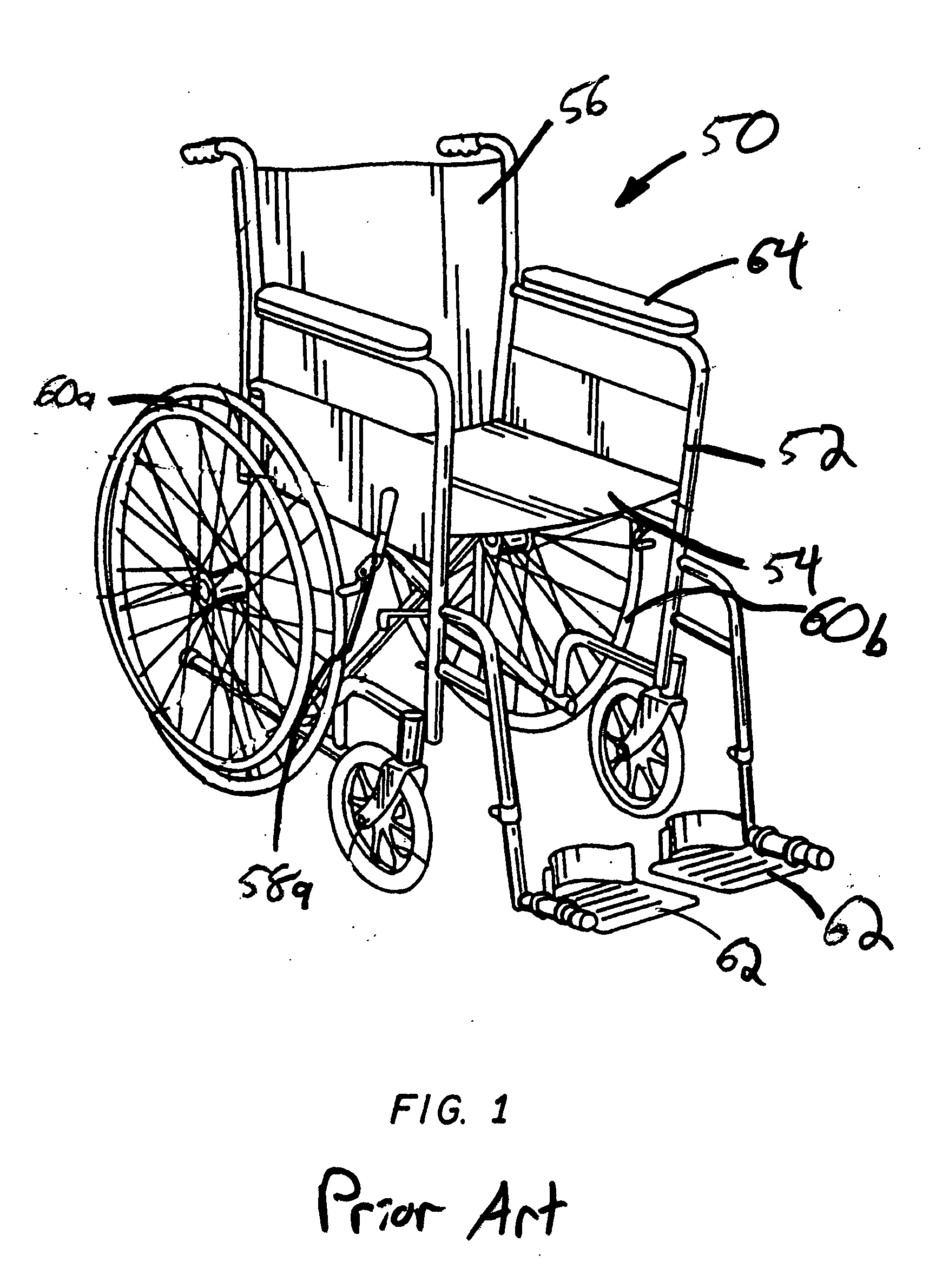Automatic wheelchair brake device
a brake device and wheelchair technology, applied in wheelchairs/patient conveyances, wheelchairs, cycle equipment, etc., can solve the problems of user error, increased risk of falling and injury, user attempting to stabilize himself or herself while entering or leaving the wheelchair, etc., to achieve enhanced retrofitability, easy retrofitability, and preservation of normal folding operation
- Summary
- Abstract
- Description
- Claims
- Application Information
AI Technical Summary
Benefits of technology
Problems solved by technology
Method used
Image
Examples
Embodiment Construction
[0043]FIGS. 3-18 collectively illustrate a wheelchair with a weight-actuated brake mechanism, indicated by numeral 100, to control the free movement of the wheelchair. Referring generally to FIGS. 3-5C, and particularly to FIGS. 3 and 4, typically two wheelchair brake mechanisms 100a (in an exploded view) and 100b are attached to a wheelchair 102. Each wheelchair brake mechanism 100a and 100b controls the rotational movement of each of drive wheels 110a and 110b respectively. The following description of the wheelchair brake mechanisms 100a and 100b will be discussed singularly, but it should be noted that it applies equally to both mechanisms 100a and 100b.
[0044] The wheelchair brake mechanism 100a includes at least one support structure 200 comprising an elongate bar that is pivotally coupled to a portion of the foldable frame 108. Although an elongate bar is shown and discussed as one of the example embodiments, it should also be noted that the support structure 200 may also com...
PUM
 Login to View More
Login to View More Abstract
Description
Claims
Application Information
 Login to View More
Login to View More - R&D
- Intellectual Property
- Life Sciences
- Materials
- Tech Scout
- Unparalleled Data Quality
- Higher Quality Content
- 60% Fewer Hallucinations
Browse by: Latest US Patents, China's latest patents, Technical Efficacy Thesaurus, Application Domain, Technology Topic, Popular Technical Reports.
© 2025 PatSnap. All rights reserved.Legal|Privacy policy|Modern Slavery Act Transparency Statement|Sitemap|About US| Contact US: help@patsnap.com



